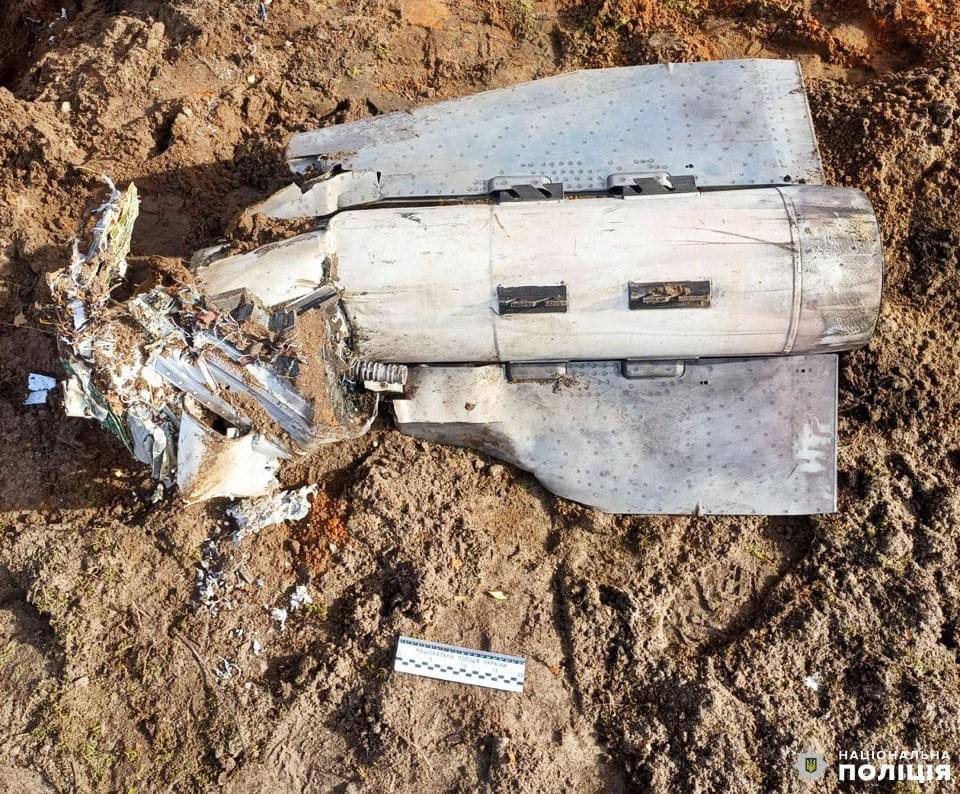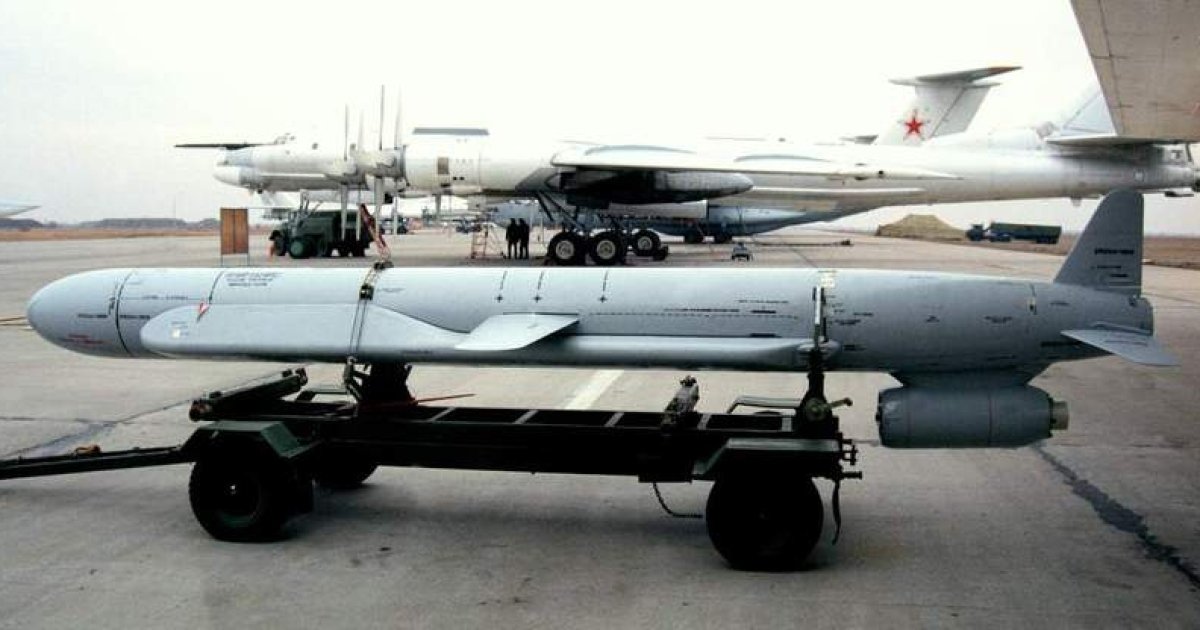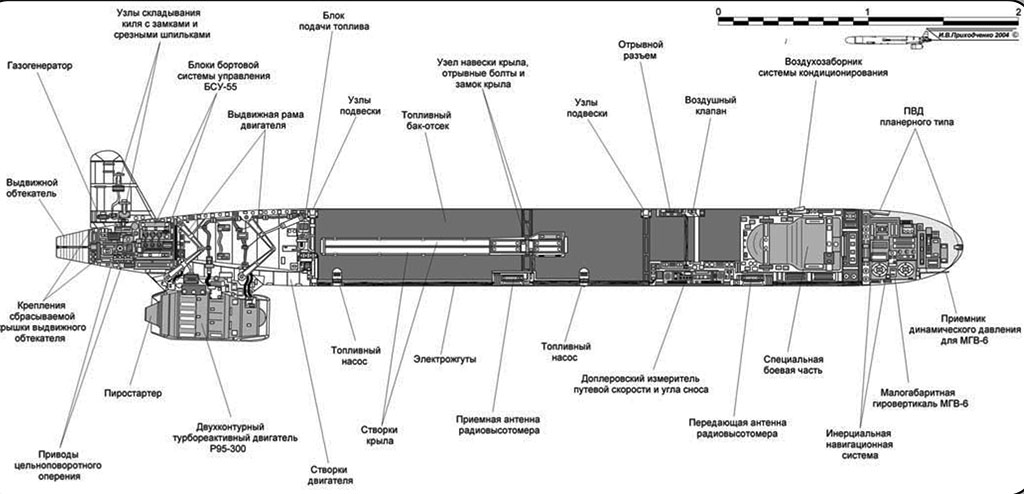Ukrainian Air Force Intercepts Russian Kh-55SM Missile with Nuclear Warhead Simulator
31 March, 2024 The wreckage of the Kh-55SM missile. Photo credits: National Police Fighter aircraft of the Ukrainian Air Forces shot down the Russian Kh-55SM cruise missile in the Rivne region.
This was reported by the Telegram channel @war_home. The Kh-55SM was reportedly shot down by a R-27 air-to-air missile. It is also noted that the Russian cruise missile was equipped with a simulator of a nuclear warhead.
 The wreckage of the Kh-55SM.
The wreckage of the Kh-55SM.
Photo credits: National Police
Therefore, the missile was most likely used as a decoy, but it still posed a threat to Ukrainian infrastructure upon impact.
 The wreckage of an R-27 missile. Photo credits: National Police
The wreckage of an R-27 missile. Photo credits: National Police
Kh-55
Kh-55 is a strategic nuclear subsonic air-launched cruise missile developed and produced since the late 1970s to arm strategic bombers. It became the first fully digital component base cruise missile manufactured in the USSR.
The Raduga Design Bureau proposed the missile in 1971, but the idea of creating it was not approved and postponed until 1976. The assembly of the first missiles took place in 1978. Since the Raduga's facilities were overloaded, production was gradually moved to Kharkiv; later it was folded and moved to Russian city of Kirov.
 Kh-55 missile with additional tanks.
Kh-55 missile with additional tanks.
Photo from open sources
The carriers of the missiles were the Tu-95 turboprop strategic bomber, upgraded to the Tu-95MS version, and the Tu-160 supersonic strategic bomber. The design of the missile is built according to a classic aerodynamic configuration; the fuselage is made of AMG-6 aluminum alloy. A fuel tank holds most of the internal volume.
Wing, tail, and nose fairing are made of composite materials. The stabilizer and the wing before the rocket launch are folded and opened with the help of squirrels after the launch. The missile is driven by a two-circuit turbojet engine of Ukrainian production (Motor Sich) R95-300.
The engine is located in the missile's tail on a special pylon that extends down from the body before launch. Engine unwinding is performed by a pyrostarter. Kh-55 is equipped with a self-correcting inertial guidance system and a terrain contour matching system.
 Kh-55 missile.
Kh-55 missile.
Images from open sources
The flight program is embedded in the missile before launch and contains elements of a digital map of the terrain along the flight route. During the flight, the onboard BSU-55 control system compares the control points on this map with the real altimeter indicators and, if necessary, issues appropriate commands for course adjustment. Due to the duration of the flight, the power supply of the rocket is provided by the RDK-300 generator.
The maximum range, depending on the missile variant, is from 2000 to 3500 kilometers.
There are the following missile variants:
- Kh-55OK - with optical guidance;
- Kh-55SM - the 1987 version, equipped with additional fuel tanks, with increased to 3500 kilometers flight range;
- Kh-65 - tactical version with a non-nuclear warhead;
- Kh-65SE - anti-ship version;
- Kh-555 - deep modernization of the missile with a new guidance system, equipped with a cluster warhead or multifactor (high-explosive-incendiary), weighing 410 kg.
It is worth mentioning that in 1999, Ukraine transferred 575 Kh-55 and Kh-55SM missiles to Russia as payment for the supply of natural gas.